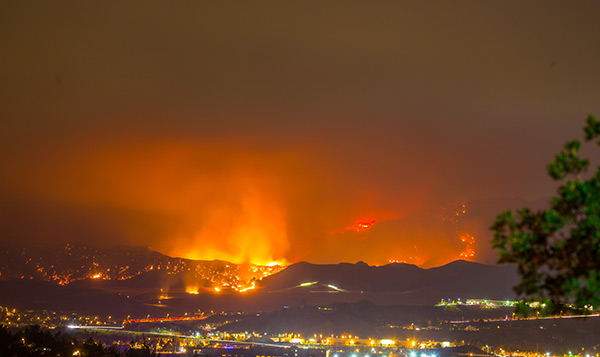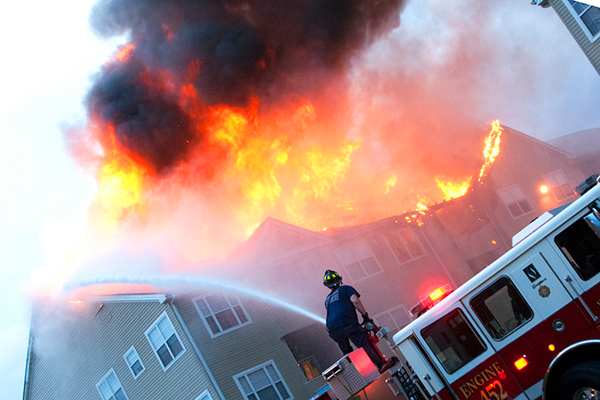Wildfires are nothing new to many residents of California. However, trying to combat them during a pandemic is an entirely different ball game. After all, how do you mobilize hundreds of first responders and keep them socially distanced at the same time? Plus, there is always the possibility that entire communities will need to be evacuated to safety. What’s the best way to do this while trying to keep everyone six feet apart?
 According to HCN, Mike Mohler, the deputy director of the California Department of Forestry and Fire Protection (Cal Fire) says, “When we look at a large wildland fire, our base camp operation can hold sometimes up to 6,000 personnel.†This includes firefighters, paramedics, law enforcement officers, private vendors providing trailers and portable toilets, government officials, and journalists. Many people in these positions may have already been exposed to the coronavirus in their day-to-day work but may not be showing symptoms. This makes it even more imperative that everyone stays socially distanced when possible.
According to HCN, Mike Mohler, the deputy director of the California Department of Forestry and Fire Protection (Cal Fire) says, “When we look at a large wildland fire, our base camp operation can hold sometimes up to 6,000 personnel.†This includes firefighters, paramedics, law enforcement officers, private vendors providing trailers and portable toilets, government officials, and journalists. Many people in these positions may have already been exposed to the coronavirus in their day-to-day work but may not be showing symptoms. This makes it even more imperative that everyone stays socially distanced when possible.
An outbreak at a base camp could easily deter the fight against a wildfire, causing a domino-effect of problems. Property could be destroyed, communities could be evacuated, and lives could even be lost.
Preventing California Wildfires Before Fire Season
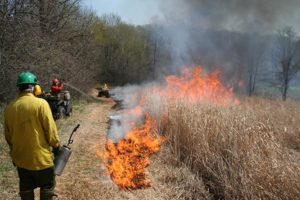 In preparation for fire season, which typically takes place from May to October, Cal Fire performs controlled burns in the spring. The California government declared controlled burns essential for keeping out-of-control wildfires like the Camp Fire from happening again.
In preparation for fire season, which typically takes place from May to October, Cal Fire performs controlled burns in the spring. The California government declared controlled burns essential for keeping out-of-control wildfires like the Camp Fire from happening again.
Part of preventing wildfires includes tracking wind patterns. This is especially important this year so that firefighters can help prevent smoke from blowing into cities during a time whenthere is a virus going around that attacks the lungs.
Fighting Wildfires During a Pandemic
So, what can you do if you’re a California homeowner living in a wildfire-prone community? You can take these steps to prepare yourself and your home for fire season.
1. Create a Defensible Space
You can do this by forming a zone around your house that will help slow a wildfire down and possibly direct it away from your home. To create this zone, start by clearing out anything in your yard or around your house that could be fuel to a flame. This includes landscaping, woodpiles, decks, dried brush, trees, etc. In California, it’s best to remove anything that could easily burn at least 100 feet away from your home.
Landscaping and Trees
When adding landscaping to the outside of your home, use native vegetation and space trees at least ten feet apart from each other. Always remove any dead debris like dying trees, shrubs, or weeds. Maintain your landscaping by frequently pruning trees and shrubs, regularly mowing the lawn, and properly disposing of any branches, trimmings, and leaves.
Other Outdoor Areas
It’s also important to maintain your irrigation system, including hoses and sprinklers. You should regularly clear your roof, eaves, and gutters of any debris. Also, make sure any tree branches are trimmed so that they do not extend over the roof or chimney of your house. Move firewood and propane tanks at least 50 feet away from your home and keep the area around them clear. Do not attach wooden fencing directly to your house.
2. Retrofit Your Home with Non-Flammable Materials
If you’re buying or building a new home, then you should use non-flammable materials on the house’s exterior. However, if you’re living in a home that was not built with non-flammable materials, there are a few ways you can update the exterior to prevent as much damage as possible in the event of a fire.
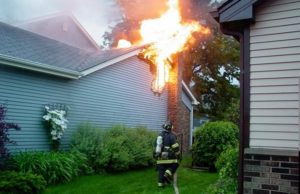 Replace your roof with noncombustible roofing materials.
Replace your roof with noncombustible roofing materials.- Use fire-resistant materials like treated wood to box in eaves, fascias, soffits, and subfloors.
- Apply noncombustible screening to all vent and/or eave openings.
- Install spark arresters in the chimney.
- Enclose undersides of decks with fire-resistant materials.
- Avoid vinyl siding which can melt and instead cover exterior walls with fire-resistant materials like stucco, stone, or brick.
- Use double-paned or tempered glass for all exterior windows.
3. Have an Evacuation Plan
In the event that you do need to evacuate your home due to a wildfire, it’s important to have a plan in place for you and your family.
- Know your community’s disaster preparedness plans.
- Have an emergency kit ready and easily accessible by all household members. There are many you can buy online, or you can put together your own following these guidelines.
- Create an emergency plan for your household that includes escape routes from your home and your neighborhood. Designate an emergency meeting place for your family in case you become separated.
California Homeowners Insurance: Wildfire Coverage
A standard Homeowners Insurance policy typically covers fire damage to your home, like fires caused by faulty appliances or wiring. However, that may not be the case if you live in a high-risk area that is prone to wildfires. Additionally, some insurers do not sell Homeowners Insurance policies in these areas. It’s important to understand your policy so that you know what is and is not covered.
How to Get Wildfire Coverage
If you checked your policy and discovered that your insurance company does not cover wildfire damage because of the region you live in, there are still some options you can look into to get your house covered. Keep in mind that you will most likely have to pay a higher premium for this coverage.
FAIR Plans
The Fair Access to Insurance Requirements (FAIR) Plans are state-run insurance programs created specifically to cover homes in high-risk areas that are most vulnerable to natural disasters. They provide coverage in regions denied by most insurance companies. However, the policies typically cost more and cover less for the amount you pay. Depending on your home’s level of risk, this type of coverage may still be worth it. In California, the FAIR Plan covers brush fire damage to structures and personal property, up to a $1.5 million limit.
Premier and Surplus Policies
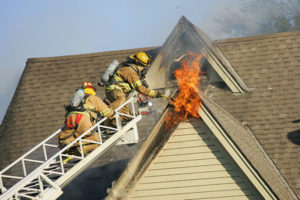 If your California home is worth more than $1 million, you may qualify for a specialized Homeowner Insurance policy through a premier insurer. A premier insurance company offers additional benefits and more robust coverage options to protect high-value properties in the event of a wildfire. Similar to premier insurers, there are also surplus lines. Surplus lines policies provide specialized coverage for risks that a standard insurance company won’t cover.
If your California home is worth more than $1 million, you may qualify for a specialized Homeowner Insurance policy through a premier insurer. A premier insurance company offers additional benefits and more robust coverage options to protect high-value properties in the event of a wildfire. Similar to premier insurers, there are also surplus lines. Surplus lines policies provide specialized coverage for risks that a standard insurance company won’t cover.
Speak with an Insurance Specialist
At AIS, we partner with multiple insurance companies so that you can find the right one to protect your home. Call one of our knowledgeable agents at (855) 247-5298 to determine the Homeowners Insurance policy that’s right for you. We shop multiple insurers at once so that you can easily compare rates and coverage. We also find you eligible discounts and bundles to save you even more.
Want more information on Homeowners Insurance? Check these articles out:
- Is Flood Damage Covered By Homeowners Insurance?
- What Happens If My House is Broken Into?
- How Does Earthquake Insurance Work in California?
The information in this article is obtained from various sources. This content is offered for educational purposes only. The definitions, terms, and coverage in a given policy may be different from those suggested here. No warranty or appropriateness for a specific purpose is expressed or implied.
